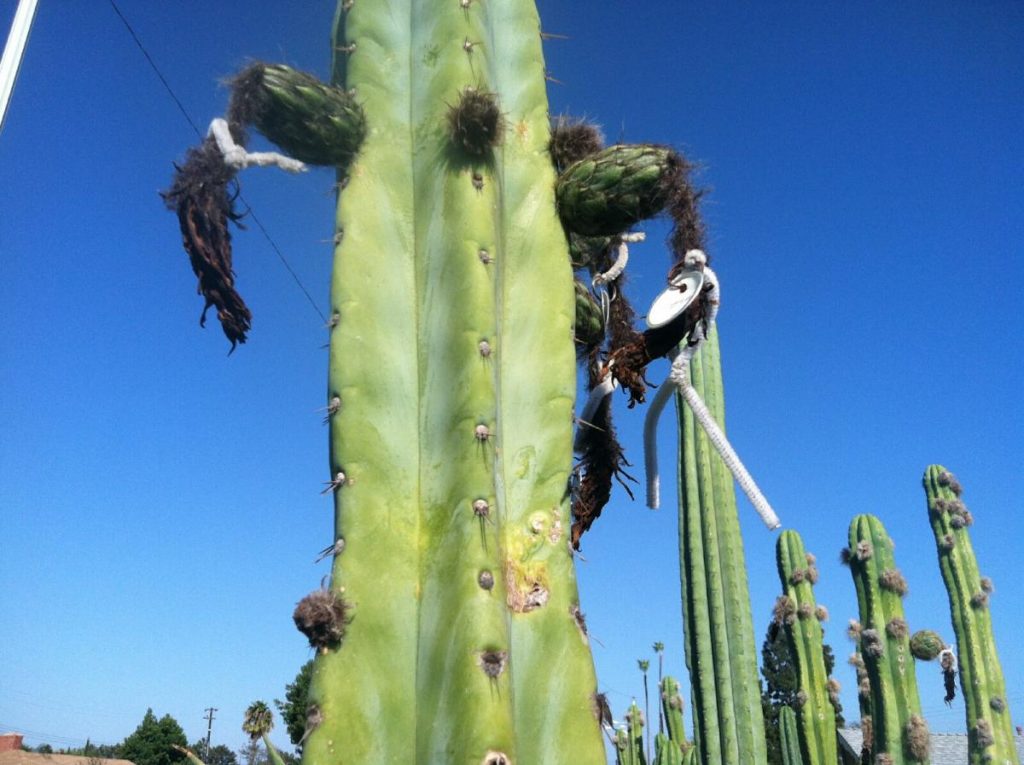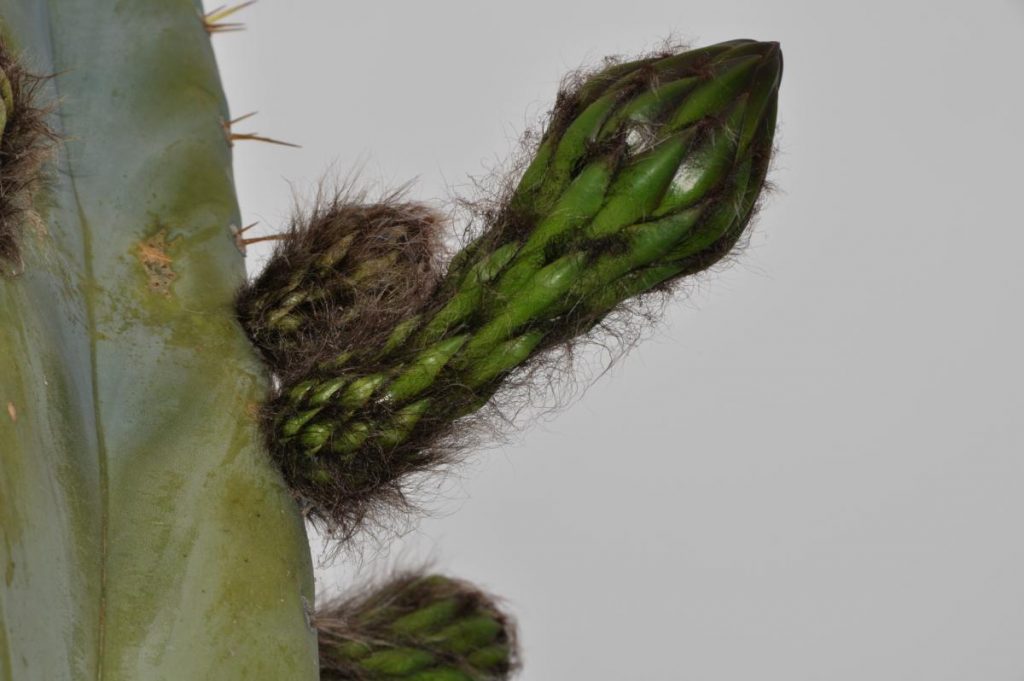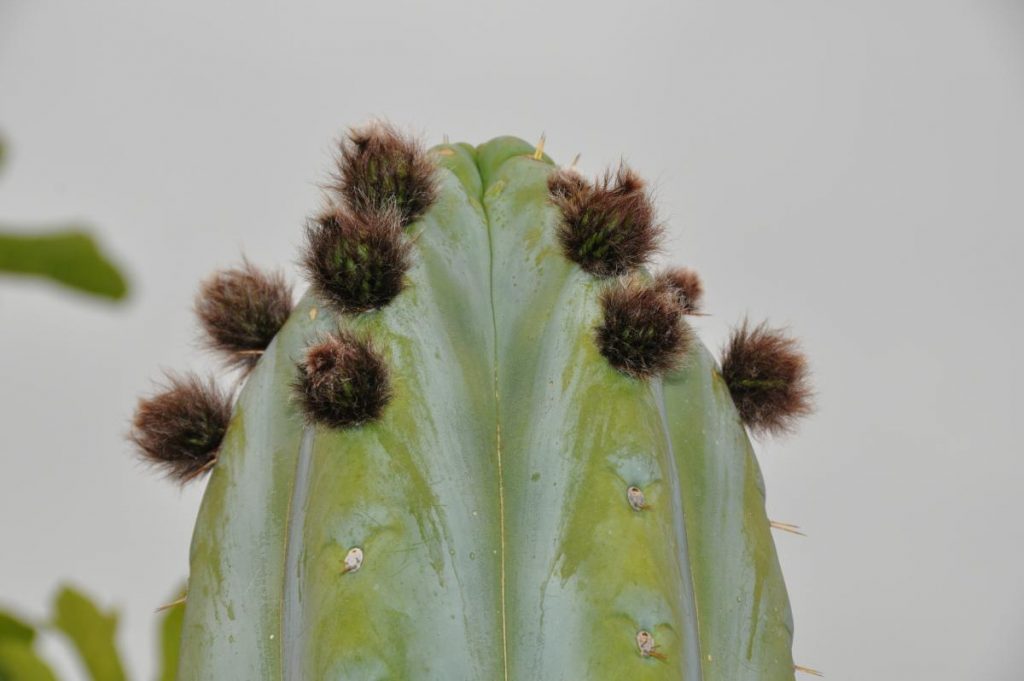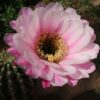
Trichocereus huanucoensis goes back to a nursery owner called Harry Johnson senior, who brought this plant into the USA in the 1950s. Unlike popular belief, Trichocereus huanucoensis is NOT an official species. There is no official description and very little information about the plant. According to Herbarium pieces, its place of origin is Huanuco. It is a beautiful town directly beside Chavin de Huantar and the plants that can be found there are Trichocereus santaensis and intermediate forms between Trichocereus santaensis and Trichocereus pachanoi. The same applies to Trichocereus huanucoensis too. It is fairly typical of Backeberg´s species Trichocereus santaensis and the place of origin underlines that. If you want to see similar plants, check out the posting about Chavin de Huantar.

Trichocereus huanucoensis has very wide ribs, which give it a similar look to Trichocereus santaensis and Trichocereus bridgesii. The original site where Johnson collected his seeds is unknown, but the plants grown from them are common to be found in some parts of the USA. In California, quite a few larger plants were planted outside. Apart from its occurrence in cactus nurseries and collected in the USA, it is very rare in Europe. This underlines the suspicion that Mr. Johnson was indeed the source and distributed this plant among his friends and customers.
Trichocereus huanucoensis tends to be extremely fat and has a very bloated look. Its spine length is extremely variable and the specimens can have no spines or long spines but it usually has very few spines per areole. The spines are usually golden, but lack a swollen spine base. This is a key similarity to the plants from Chavin de Huantar as well.
Though the obvious lack of a description, it is a very attractive plant that deserves to be propagated. It is commercially available from Sacred Succulents or Misplant but it is still a rare plant.
One specimen of Trichocereus huanucoensis is also growing in the Huntington Botanical Garden in California. The specimen that Sacred Succulents use for their Huanucoensis crosses was originally from Ed Gay, who was a close friend of Johnson & Huntington. Some people tend to believe that Trichocereus huanucoensis is a Bridgesii relative, but the flower morphology pretty much rules that out right away. Its flowers and flower buds are typical for a Peruvian San Pedro, especially T. santaensis.
There is a variety of this plant on the market labeled H80361, which probably originated from Johnson also. There might have been the chance to find out more about the origin of the plant in the Huntington Botanical Garden but unfortunately, they do not have any info on where some of their older plants came from. At some point, their ID cards were stolen or lost, what makes it more difficult to find more information on the plant´s origin other than that it came from Huanuco.
Copyright: Misplant.net

Trichocereus Aff. Huanucoensis – Trout




Huanocoensis var. Stillman



Check out our main plant database pages for Trichocereus pachanoi aka Echinopsis pachanoi here:
And Trichocereus bridgesii here:
Also check out our Trichocereus Facebook group here:

















